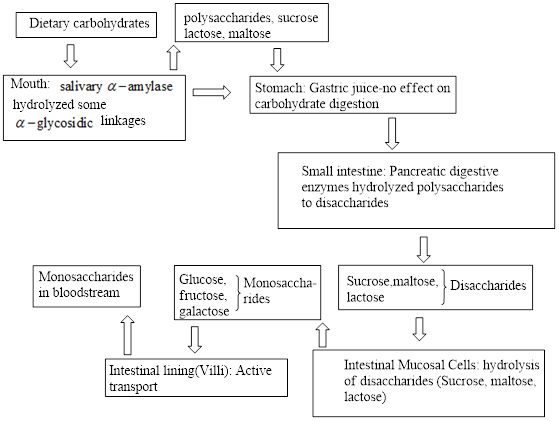
Concept explainers
Interpretation: To identify the site where the enzyme that converts disaccharides to monosaccharides is present.
Concept introduction: Carbohydrates are the
Monosaccharides are the simplest carbohydrate units that cannot be hydrolyzed further to give the smallest units. Disaccharides contain two monosaccharide units and on hydrolysis, it gives two monosaccharide units.
In the digestion process, the food molecules break down into small chemical units through hydrolysis. These small chemical units are used by cells present in the body for their

Enzymes are specialized proteins that act as biological catalysts. Enzymes accelerate the biochemical reactions to produce the substances that are needed for cells for their proper functioning.
Want to see the full answer?
Check out a sample textbook solution
Chapter 24 Solutions
General, Organic, and Biological Chemistry
- The smallest monosaccharides that can exist are a. trioses b. let roses c. pentoses d. no correct responsearrow_forwardWhich of the following is the correct Haworth projection formula for a monosaccharide with the Fischer projection formula a. no correct responsearrow_forwardHormone-sensitive lipase needed for triacylglycerol mobilization is activated by a. epinephrine b. cAMP c. adipocytes d. no correct responsearrow_forward
- The number of structural building blocks present in a sphingoglycolipid in which a single monosaccharide unit is present is a. two b. three c. four d. no correct responsearrow_forwardChitin is a polysaccharide in which the monosaccharide unit present a. D-glucose b. D-glucosamine c. N-acetyl-D-glucosamine d. no correct responsearrow_forwardWhich of the following statements concerning the degradation of standard amino acid carbon skeletons is correct? a. Each type of carbon skeleton is degraded to a different product. b. All carbon skeletons are degraded to the same product. c. Each type of carbon skeleton is degraded by a different metabolic pathway. d. no correct responsearrow_forward
 Organic And Biological ChemistryChemistryISBN:9781305081079Author:STOKER, H. Stephen (howard Stephen)Publisher:Cengage Learning,
Organic And Biological ChemistryChemistryISBN:9781305081079Author:STOKER, H. Stephen (howard Stephen)Publisher:Cengage Learning, General, Organic, and Biological ChemistryChemistryISBN:9781285853918Author:H. Stephen StokerPublisher:Cengage Learning
General, Organic, and Biological ChemistryChemistryISBN:9781285853918Author:H. Stephen StokerPublisher:Cengage Learning

